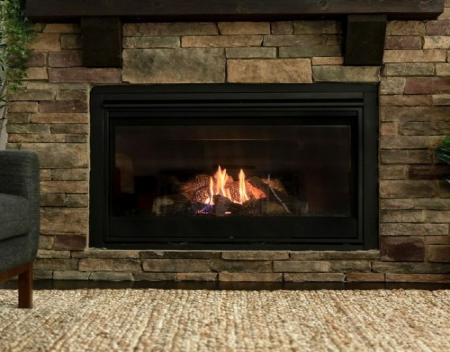Blog Categories
- Appliances Four
- Athletic Seating
- Auto Helpers
- Automated Stock Rooms
- Chocolate Four
- CuraFlo
- Damaged Goods Dating
- Flood Insurance Four
- Game Addict
- Hi Tech Pest Control
- HVAC Four
- Medical Labels Four
- Mental Health Four
- National CWS
- Promotional Ideas
- Seguros Lara Insurance
- Stem Cell Worx
- The Hidden Truth
- The Last Refuge
- The Mozilla Blog
- Video Editing Four
- Web Design Dev
- Website Development Four
- Windows Blog
Simple Gas Fireplace Maintenance Tips

The idea of owning a gas fireplace is a comforting thought. You can stay warm during cold winter nights without having to worry about buying logs or sweeping up ashes. That’s great and all, but it doesn’t matter if your unit’s constantly breaking down. Today we’ll be looking at some basic maintenance and troubleshooting tips to increase the overall longevity of your gas fireplace.
Chimney and Airflow
Unless you own a ventless gas fireplace, the unit needs to have some sort of chimney attached. All chimneys, regardless of what they’re attached to, follow one simple principle: hot air rises while cool air drops. The smoke produced from gas fireplaces can come from numerous areas, such as improper log placement, dirty burners, or a misaligned screen.
Your chimney might be stopping the warmer leftover gas from leaving the fireplace properly, which can result in condensation build-up inside the chimney itself. It’s highly recommended that you have a professional perform a certified chimney sweep in your home at least once a year.
When starting a gas fireplace, it’s best to best to slightly open a nearby door or window for the first few minutes. This will release any negative pressure in your home.
Pilot Light
A common issue with gas models is related to the pilot light. Sometimes a pilot light simply won’t turn on. Sometimes it’ll glow blue, which means it isn’t getting hot enough. To check the pilot light, open the vent and look to see if there’s a small flame inside. If not, you just need to relight it with a match or lighter.
Special types of extended match holders and long nozzled lighters are used for this kind of situation. If it doesn’t stay on despite relighting it, the problem is most likely excess moisture. Go to the gas meter and find the tee, and then drain the capped pipe holding the moisture.
Inspect the Thermocouple or Thermopile
Your unit’s thermocouple and thermopile are used to generate the electricity needed to light the fire, and they serve as a general sensor for the temperature. If either of these parts malfunction, then the pilot light won’t be able to function properly. The thermocouple is usually found in older gas fireplace models, and it’s imperative to ensure they’re hooked up correctly. Inspect the wires, screw, and tubing to see if everything’s in its proper place. Refer to your owner’s manual for more detailed instructions.
Thermopiles are newer and are often found in the latest models of gas fireplaces. The main problem with them is that they aren’t connected properly or have loose wiring. Replacing either of these devices should only be done when all other issues with your unit are resolved.
Clean the Unit
Despite not having real logs and ashes, it’s still important to clean your gas fireplace regularly. This will ensure your unit burns efficiently and helps to prevent carbon monoxide from entering your home. Before dissembling the unit, turn off the gas! The gas valve should be located on the wall next to the fireplace.
Use a hand broom or soft paintbrush to gently brush away dust and dirt on each log or decorative component. Look out for any cracks, holes, or excessive burn marks. Remove debris from the burner unit and inspect each vent hole for any form of build-up that could interfere with the flow of gas.
Re Posted From: Simple Gas Fireplace Maintenance Tips

The idea of owning a gas fireplace is a comforting thought. You can stay warm during cold winter nights without having to worry about buying logs or sweeping up ashes. That’s great and all, but it doesn’t matter if your unit’s constantly breaking down. Today we’ll be looking at some basic maintenance and troubleshooting tips to increase the overall longevity of your gas fireplace.
Chimney and Airflow
Unless you own a ventless gas fireplace, the unit needs to have some sort of chimney attached. All chimneys, regardless of what they’re attached to, follow one simple principle: hot air rises while cool air drops. The smoke produced from gas fireplaces can come from numerous areas, such as improper log placement, dirty burners, or a misaligned screen.
Your chimney might be stopping the warmer leftover gas from leaving the fireplace properly, which can result in condensation build-up inside the chimney itself. It’s highly recommended that you have a professional perform a certified chimney sweep in your home at least once a year.
When starting a gas fireplace, it’s best to best to slightly open a nearby door or window for the first few minutes. This will release any negative pressure in your home.
Pilot Light
A common issue with gas models is related to the pilot light. Sometimes a pilot light simply won’t turn on. Sometimes it’ll glow blue, which means it isn’t getting hot enough. To check the pilot light, open the vent and look to see if there’s a small flame inside. If not, you just need to relight it with a match or lighter.
Special types of extended match holders and long nozzled lighters are used for this kind of situation. If it doesn’t stay on despite relighting it, the problem is most likely excess moisture. Go to the gas meter and find the tee, and then drain the capped pipe holding the moisture.
Inspect the Thermocouple or Thermopile
Your unit’s thermocouple and thermopile are used to generate the electricity needed to light the fire, and they serve as a general sensor for the temperature. If either of these parts malfunction, then the pilot light won’t be able to function properly. The thermocouple is usually found in older gas fireplace models, and it’s imperative to ensure they’re hooked up correctly. Inspect the wires, screw, and tubing to see if everything’s in its proper place. Refer to your owner’s manual for more detailed instructions.
Thermopiles are newer and are often found in the latest models of gas fireplaces. The main problem with them is that they aren’t connected properly or have loose wiring. Replacing either of these devices should only be done when all other issues with your unit are resolved.
Clean the Unit
Despite not having real logs and ashes, it’s still important to clean your gas fireplace regularly. This will ensure your unit burns efficiently and helps to prevent carbon monoxide from entering your home. Before dissembling the unit, turn off the gas! The gas valve should be located on the wall next to the fireplace.
Use a hand broom or soft paintbrush to gently brush away dust and dirt on each log or decorative component. Look out for any cracks, holes, or excessive burn marks. Remove debris from the burner unit and inspect each vent hole for any form of build-up that could interfere with the flow of gas.
Re Posted From: Simple Gas Fireplace Maintenance Tips

